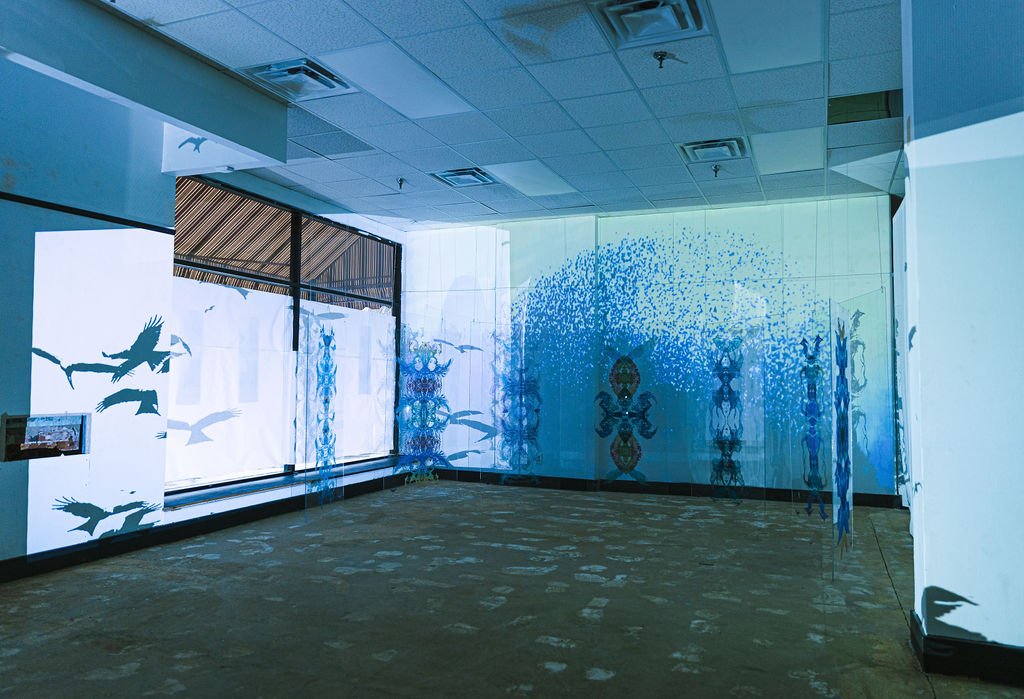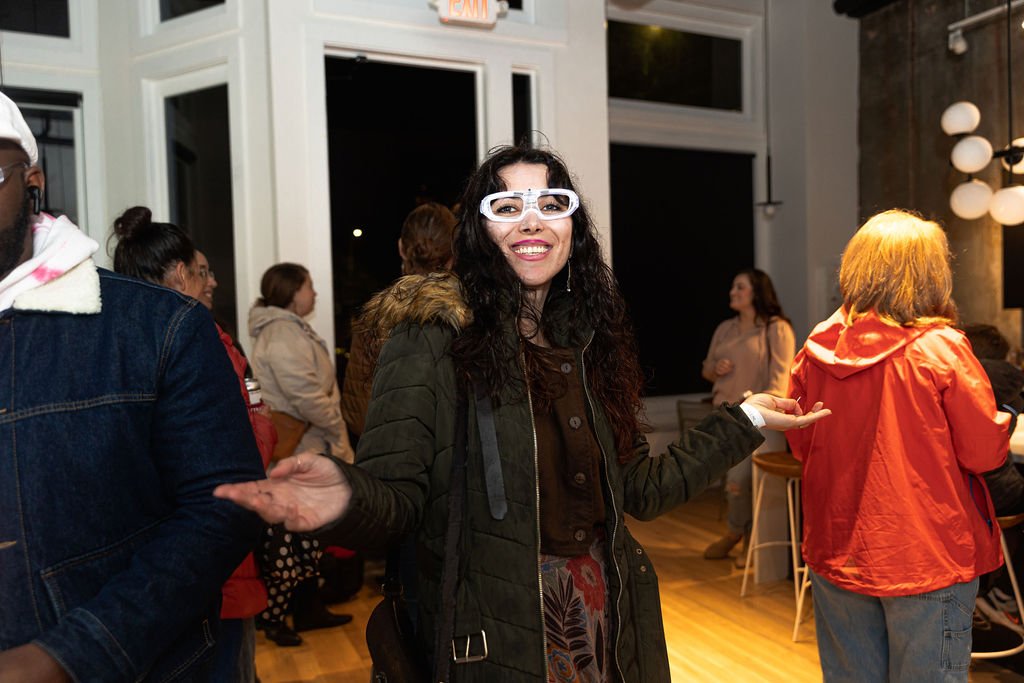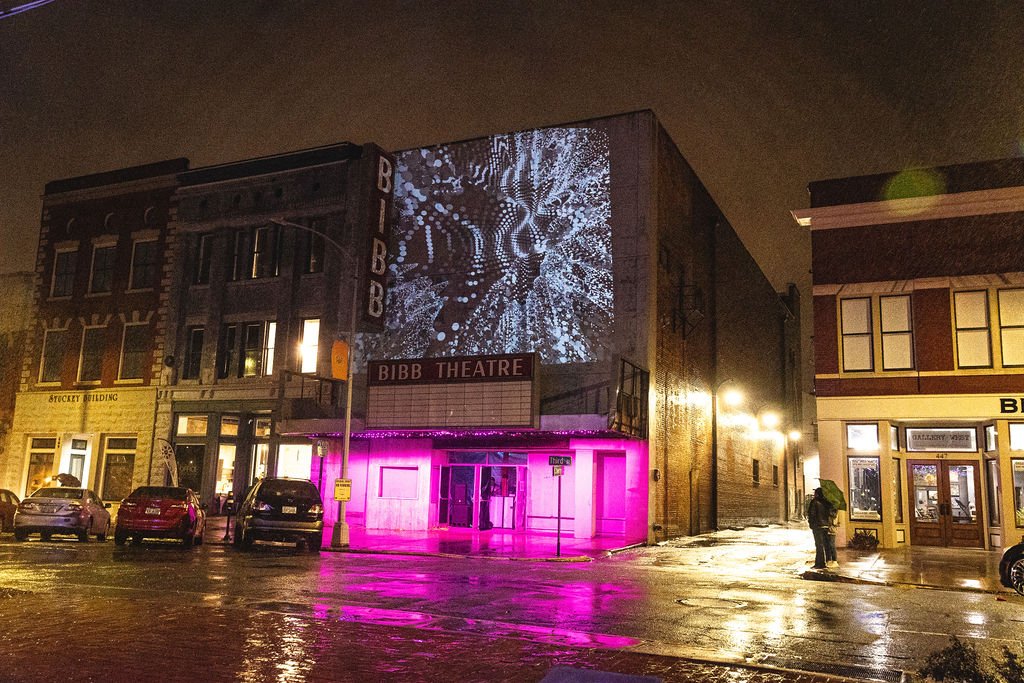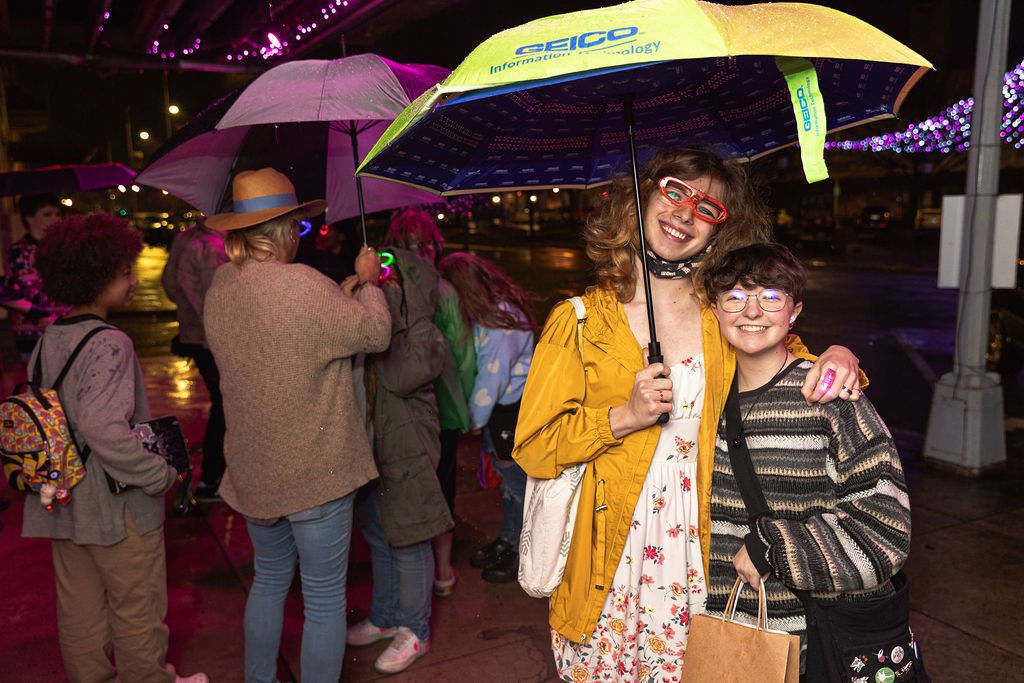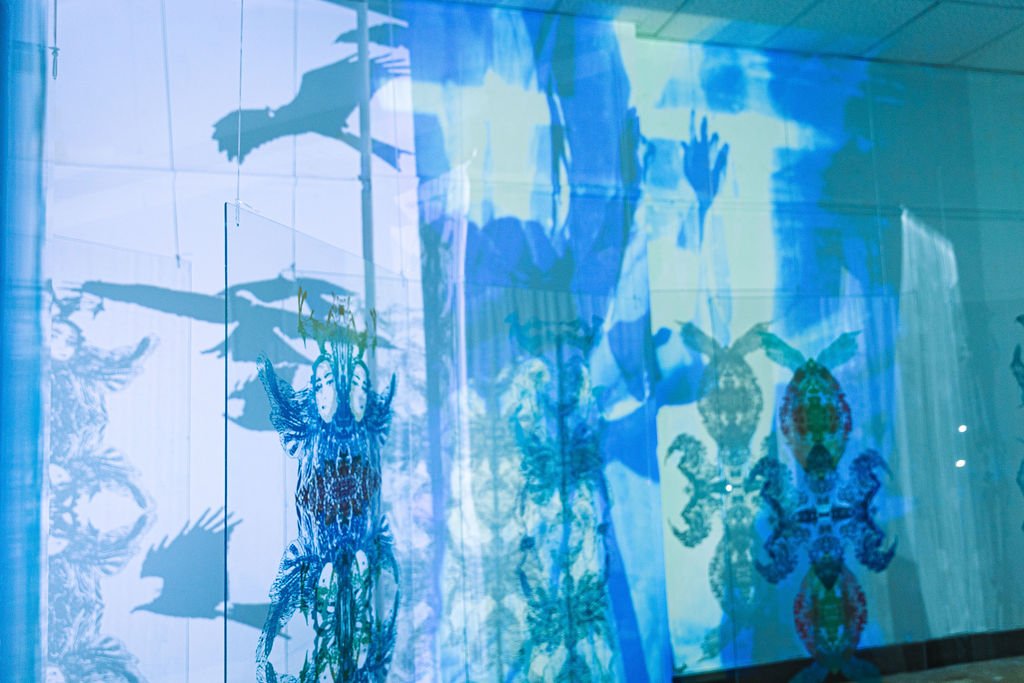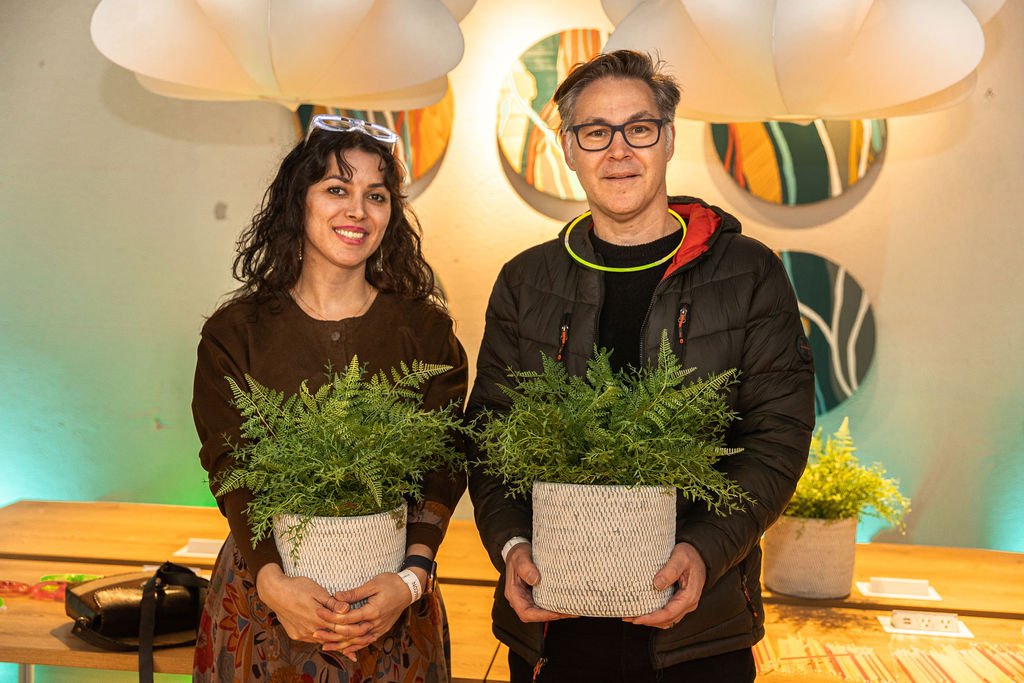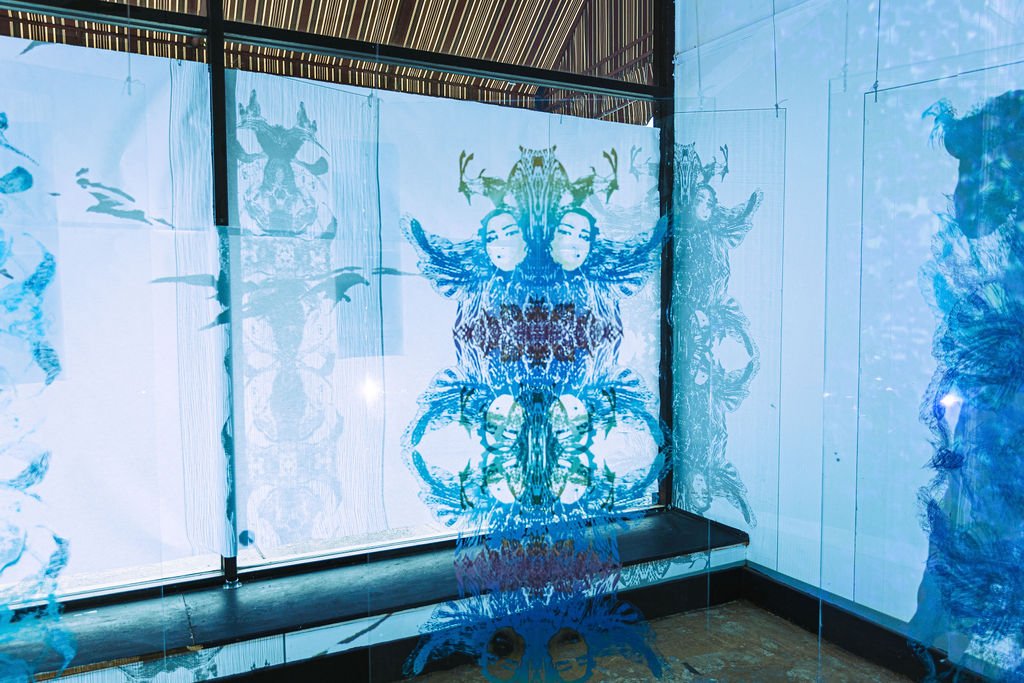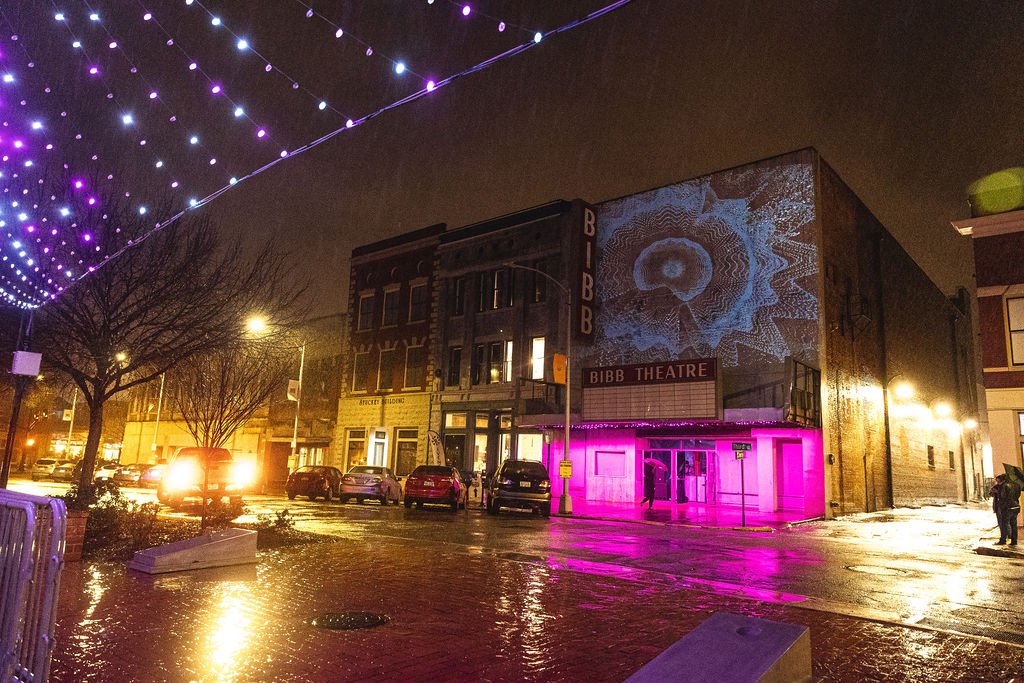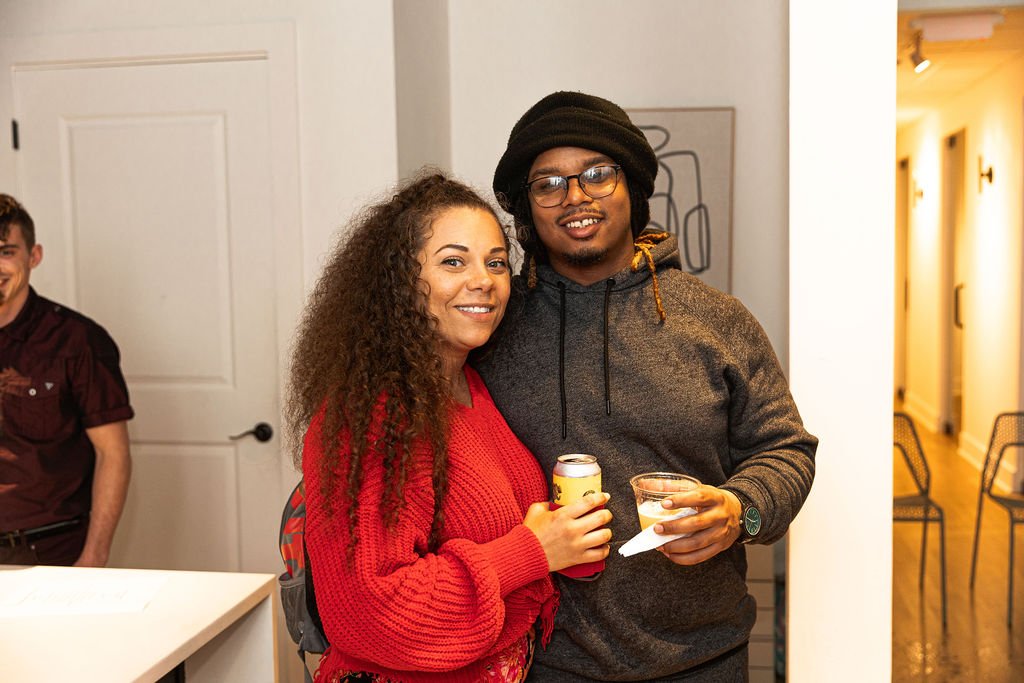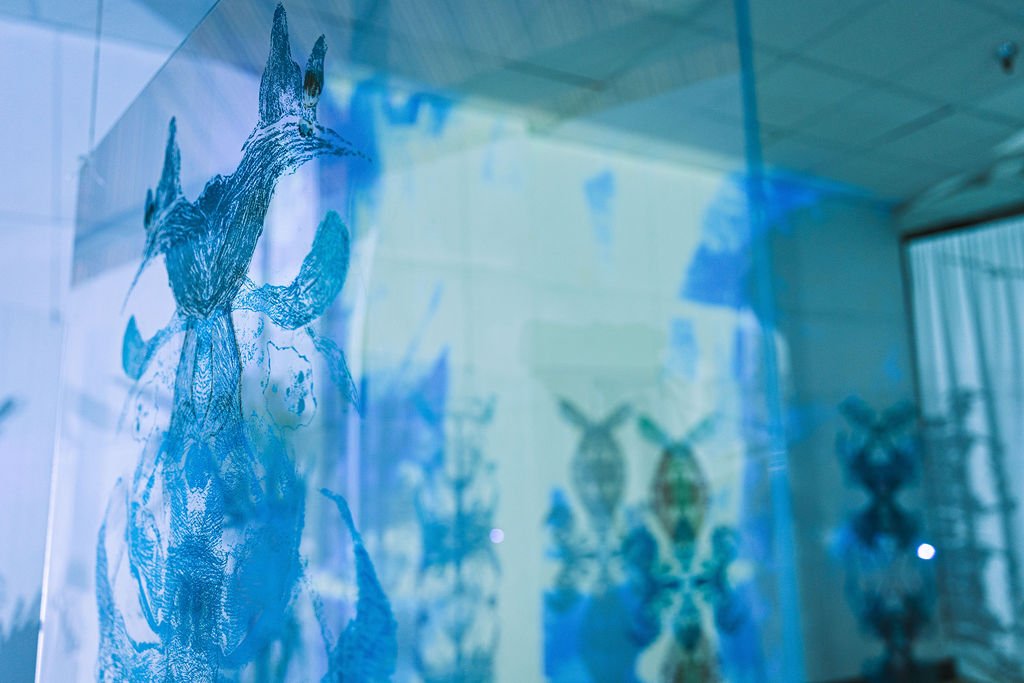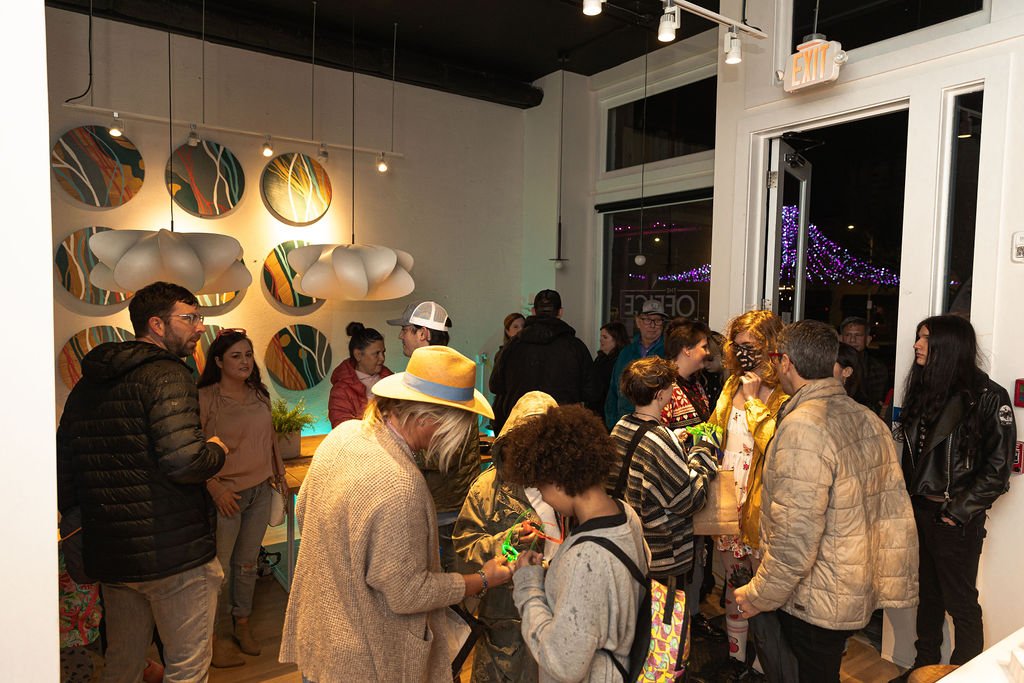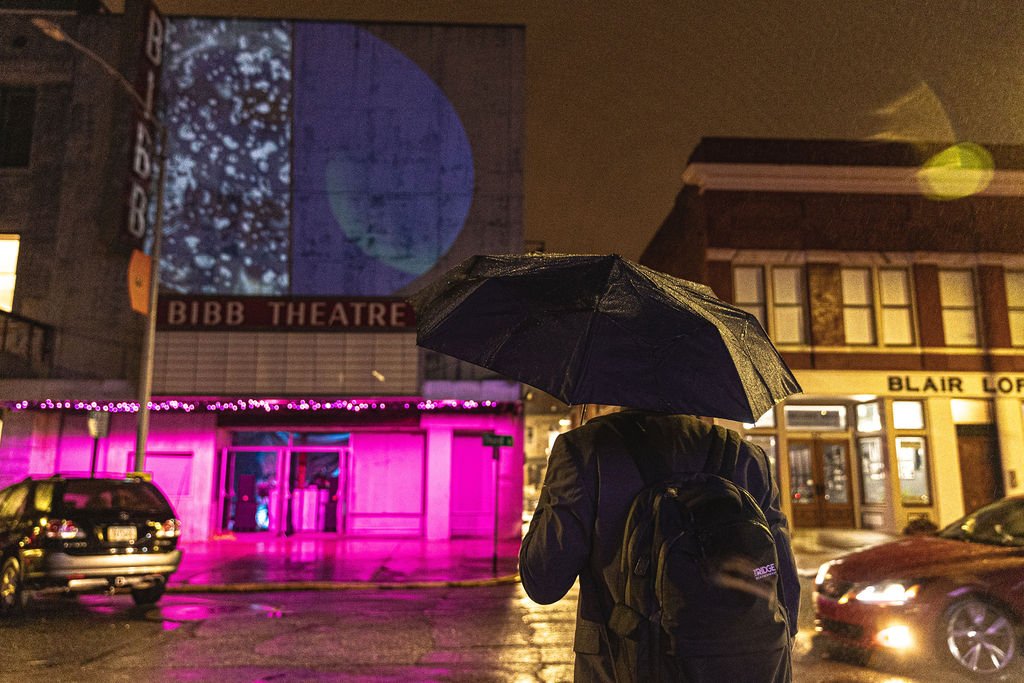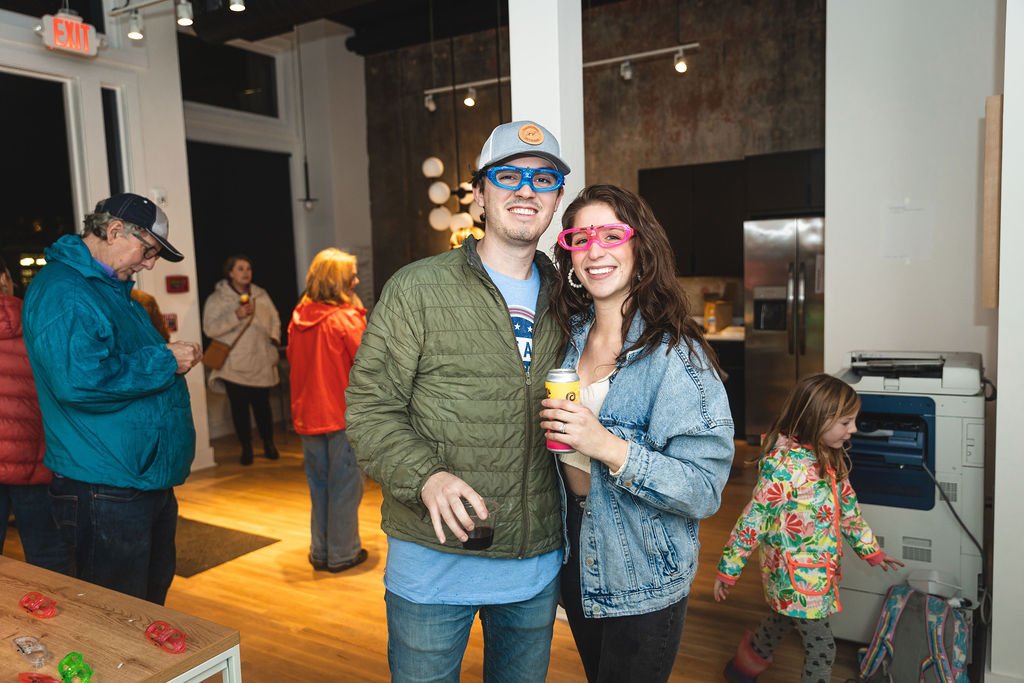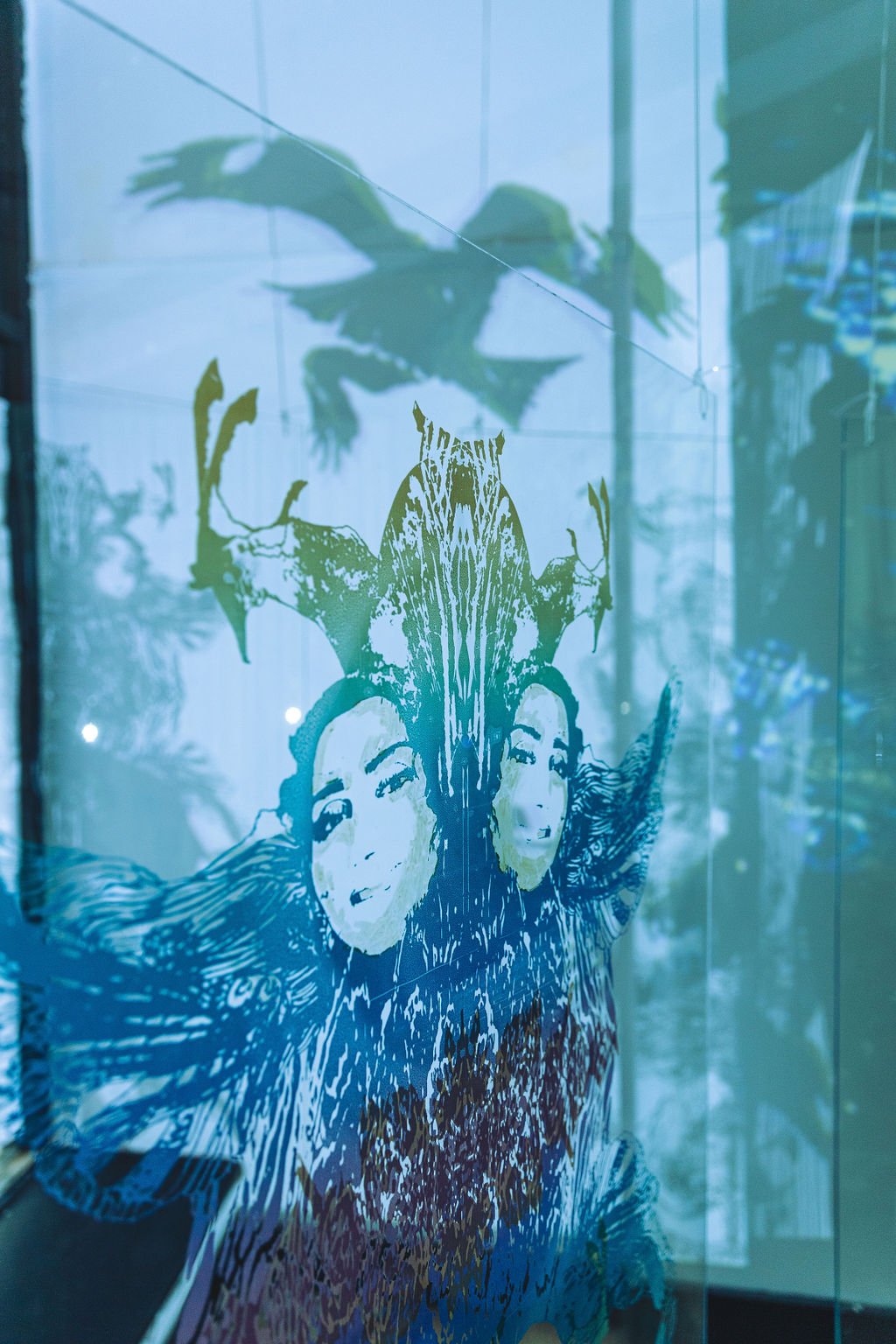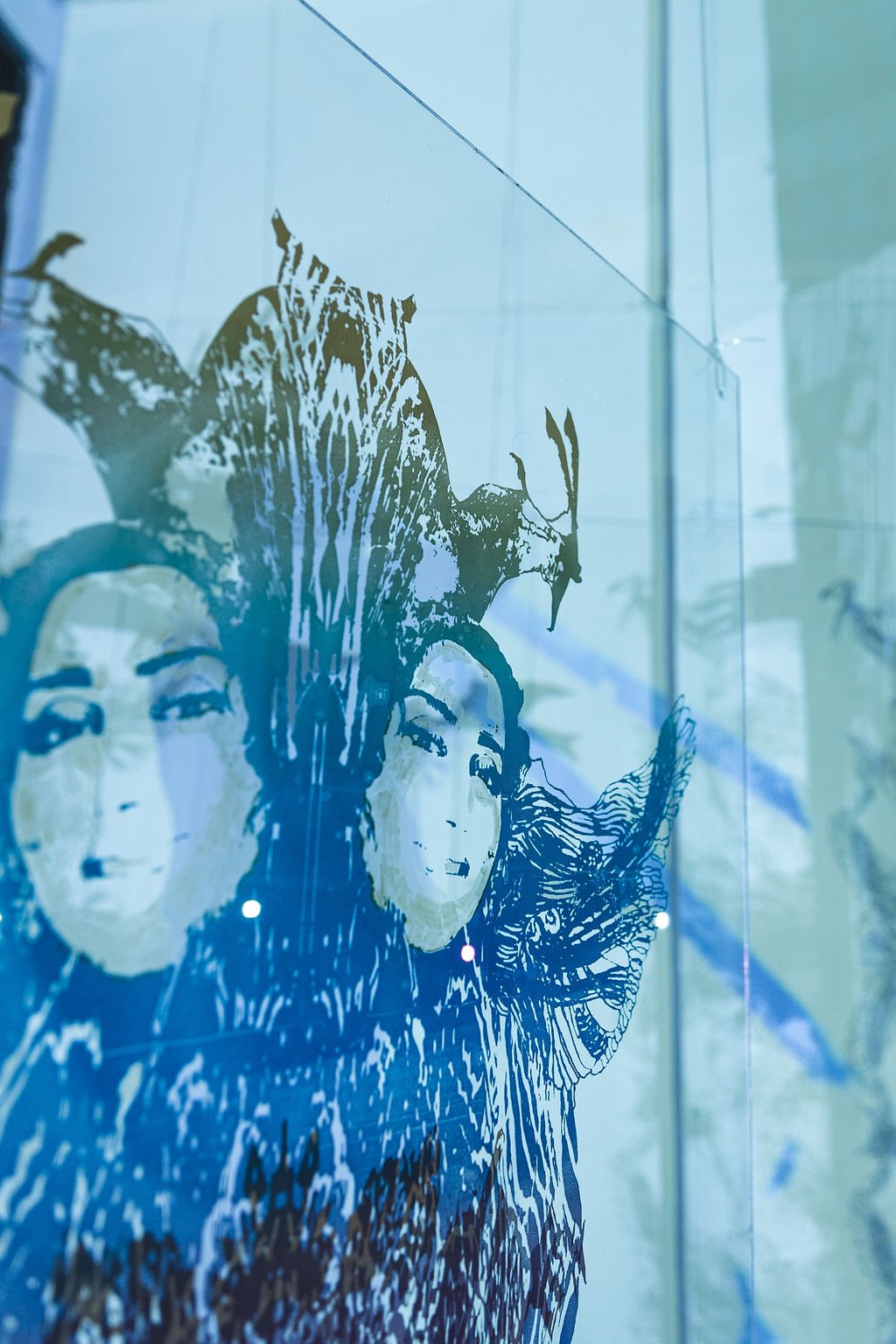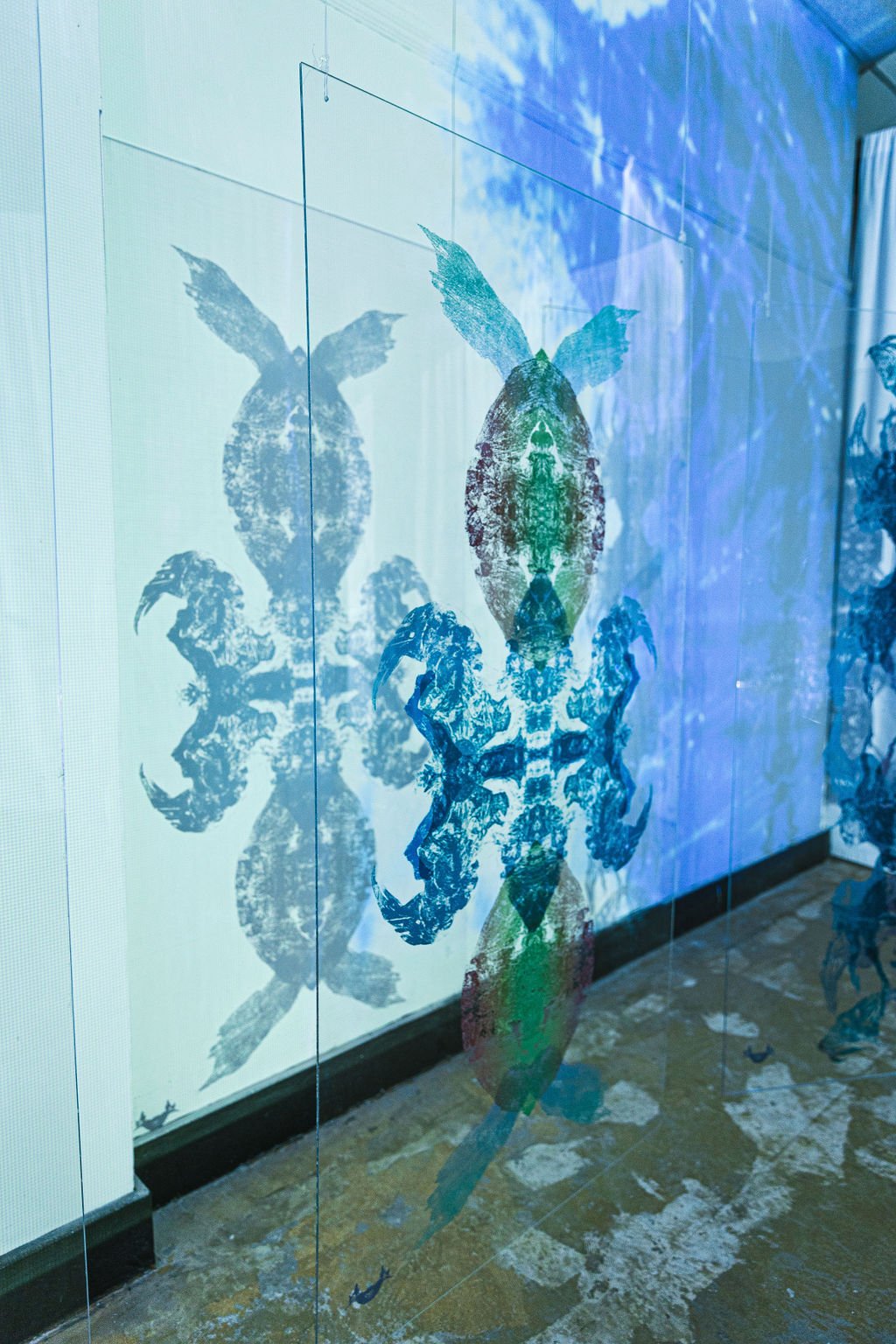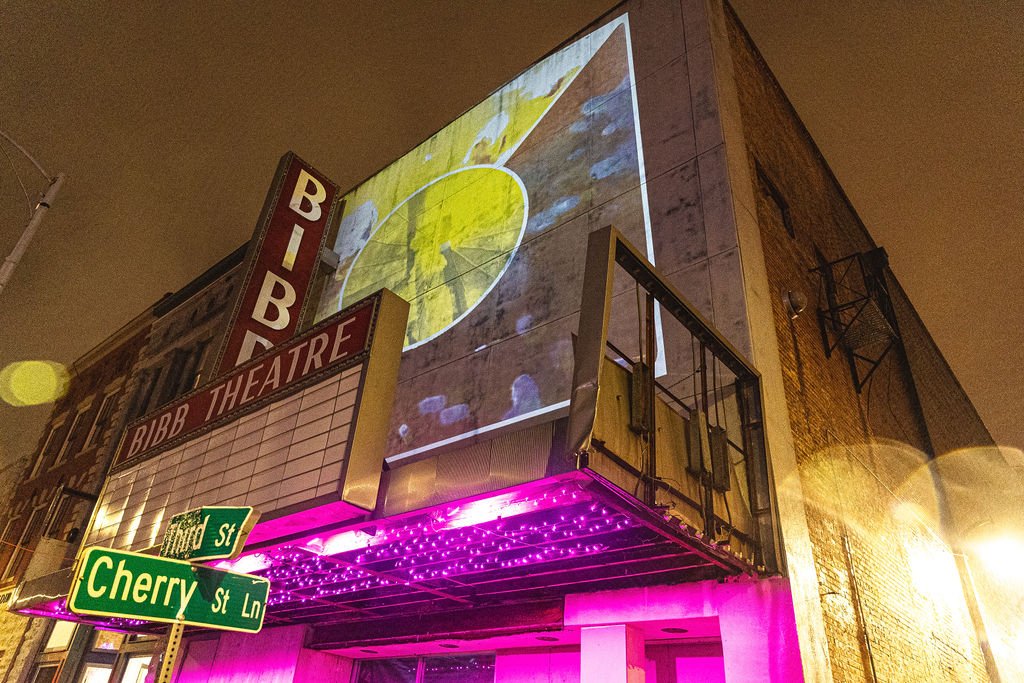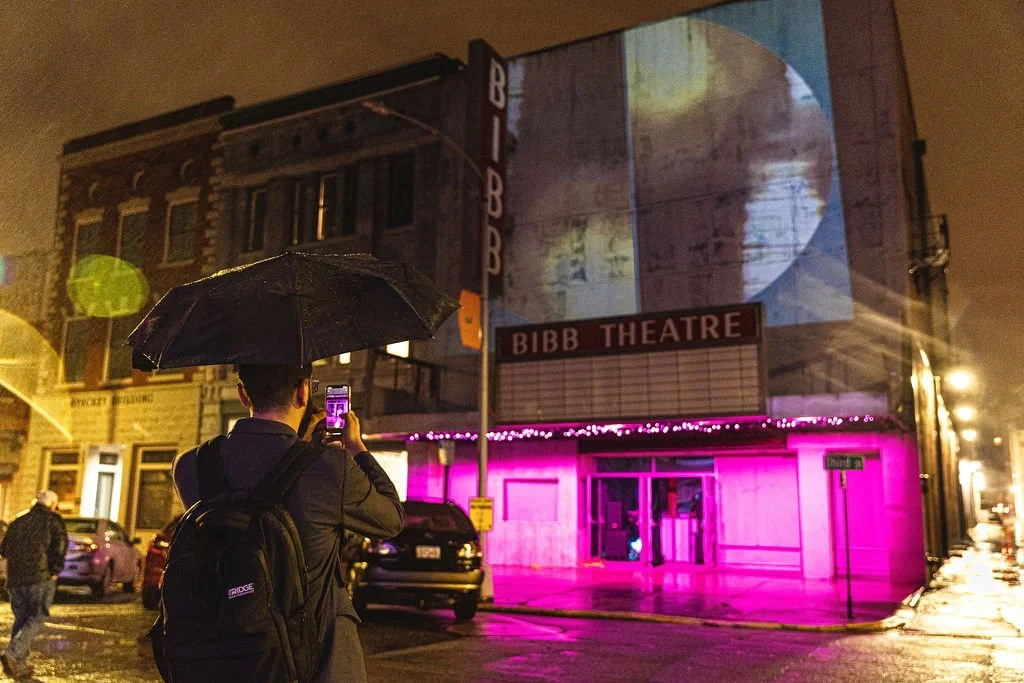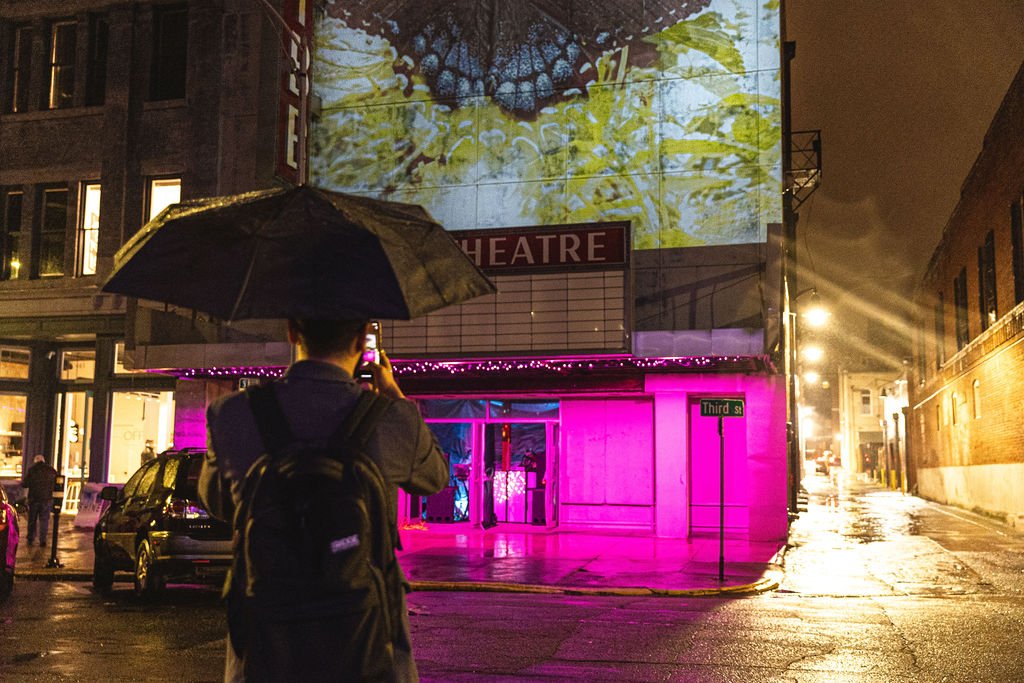This work is meant to highlight the building's history as a theater by turning it inside out, bringing the projected "film" from the inside to the exterior wall of the theater.
I want to call attention to what used to happen inside the building in it's past, and show potential for it's future. When a building goes empty for many years, it becomes forgotten, it fades into the background. Architects such as Samuel Mockbee (co-founder of the Rural Studio at Auburn) have spoken about the relationship buildings have to the soul and to memory. The projections on the front (face) of the building make the structure bring the building back to life, in a sense. In this piece, I imagine these images as the mind of the theater made visible for us to see. The filmmaker, Stan Brakhage, has written about using film to show the mind's eye, the interior of the mind, possibly the soul. Light is the essence of film but also a metaphor for knowledge, vision, and spirituality, so it seems appropriate to use light and projection here as a metaphor for the mind's eye of the Bibb Theater.
The pink light is a reference to the Yoshino Cherry trees in the park across the street from the Bibb theater and to Macon's Cherry Blossom Festival, a significant marker of the city's identity. It also points to the prominence of the Cherry trees and other flowers all over the city of Macon. This part of the piece is meant to be interactive, Viewers can stand under the theater roof and be bathed in the light, (a kind baptism) just as they are bathed in pollen every spring. Viewers can take selfies and are encouraged to share these reflections of self with others and consider all the associations of the color pink. The motto for the Cherry Blossom festival is "Think Pink," standing under the roof of the theater, a viewer can be absorbed by pink light, they can embody being pink, they become pink.


